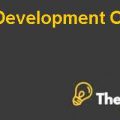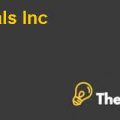Nestle business plan Case Study Solution
If we talk about the mineral water market, then the consumers for Nestle would fall into two segments, which are briefly defined below:
The segment of high priced or health conscious consumers would include those customers of the company that are highly health conscious and are looking for a pure brand that provides them with healthy water. They are less price sensitive and the price is not their key purchase factor.
The low priced and price conscious segment of the consumers would include those customers of the company that are price conscious and want mineral water at lower prices as compared to the competitor brands. They do not worry about nutrition, health &wellness and price is the key determining decision for these consumers in their product purchasing.
Demographics
The Pure Life mineral water product targets the consumers of all ages, income, genders, and occupation and this is not a product that is valuable only for the high-class consumers. Anyone can use this product and this product is for all the consumer groups.
Psycho graphics
The key determining factor here are the personality and the lifestyle of the consumers. Nestle Inc. provides pure, natural and healthy water to all those consumers that are primarily health conscious and focus on health, nutrition, and wellness. This product is also for those who are engaged in a lot of activities and do not have much time.
Consumer/customer analysis
Nestle can target international, rural and urban consumers of age 13 or greater including males and females, both. Students, professionals, and employees can all be targeted as they all consume Nestle’s products, especially its Pure Life mineral water. Psychologically, customers are more aware of their social class and by manipulating this, their lifestyles can also be targeted as stated above (Dudovskiy, 2017). Since Nestle uses the differentiated marketing strategy, therefore, it can effectively differentiate its products by targeting customers through Facebook, social media platforms and other online and traditional platforms. (Lasserouhiainen, 2018).
Market segments
Companies segment their target markets according to its behaviors and needs. Nestle has segmented its market into four categories.
Geographic segmentation
Geographic segmentation refers to the weather and climate of the market, it is dealing with and the targeted region. It can be local, international, in some specific countries or globally. Different plans are made according to the region and climate. For example, the sale of Nescafe is higher in winters as compared to in summers. It produces Nescafe Classic for winters and Nescafe ice to fulfill this need in the summers.
Demographic segmentation
Demographic segmentation is done, taking into account the age, gender, income, and marital status. Nestle has segmented the market according to age as well, its certain products such as Cerelac, Nido, and lactogen are specifically for newborn babies. Other than that, Nescafe is specifically for people working in offices. In this segment, the main target of Nestle is the young working people aging between twenty to forty years.
It produces Nido for children of age above 2, cerelac for babies above 2 months of age and lactogen 1 and lactogen 3 for babies below the age of six months and one year old. Also, as the population is increasing in the developing countries, it is investing more in these countries. The middle class is also expected to increase gradually in Asian countries like China and India, so it is focusing on targeting these markets.
Psycho graphic segmentation
The psycho graphic segment includes consumer’s values and beliefs and their activities. For example, Kit Kat is made solely just to satisfy the taste buds of its consumers and Nescafe 3 in 1 is made for people who do not have much time (ukessays, Segmentation Targeting And Positioning Of Nestle Marketing Essay, 2015). In this segment, Nestle targets b 1, b 2 and a 2 socio-economic classes. The economic classes are explained in the Appendix.
Other than this, because of the awareness among the people about the healthy diet, people are shifting to organic food. For this, Nestle is also expanding its organic products.
The company meets the demands of different segments by constantly researching these segments and their trends. Nestle uses both qualitative and quantitative analysis to evaluate the demand of its customers. In comparison to other food and beverages companies, Nestle spends highest on its Research and Development department.
Behavioral segmentation
The behavioral segment takes into account the benefits, patterns, and rates of usage of products. For example, cerelac is made specifically for children and for those mothers who want more benefits. It includes all the healthy ingredients such as, milk, rice and many nutrients that help the baby to grow healthy.
Market Potential
Competitive advantage
Nestle has been operating in the market for a very extensive period. Such extensive operations and understanding of the customer behavior have offered the company with certain competitive advantages.
- The company has a strong network of resources, allowing it to integrate the operations both, forwards and backward. Such integration allows it to control the quality and efficiency of the supply chain, hence, maintaining its brand image in the market.
- Nestle has strong Research and development capabilities, allowing it to innovate the products and processes both simultaneously to capitalize the different market opportunities.
- The extensive distribution network and consolidation of resources allow maintenance of economies of scale, which again, allows it to maintain the leading position in the majority of the market. The statistics show it’s leading or second & third ranking in the majority of the markets (Kumar, 2003).
- In addition to this, Nestle has started focusing more on the nutrition segment and has made it an autonomous unit under the Nestle umbrella. Such move has offered the company competitive edge in staying ahead of the competition by meeting the changing needs of the make and switch in the customer trends through more nutritious and hygienic choices.
- Lastly, innovation is the key aspect of Nestlé’s Competitive Edge. Through this, the company is continuously evolving in the Nutrition sector along with Infant and Dairy products. Such can be deduced from the extensive range of newly developed products in Infant and Nutrition sector by Nestle...........
This is just a sample partical work. Please place the order on the website to get your own originally done case solution.







